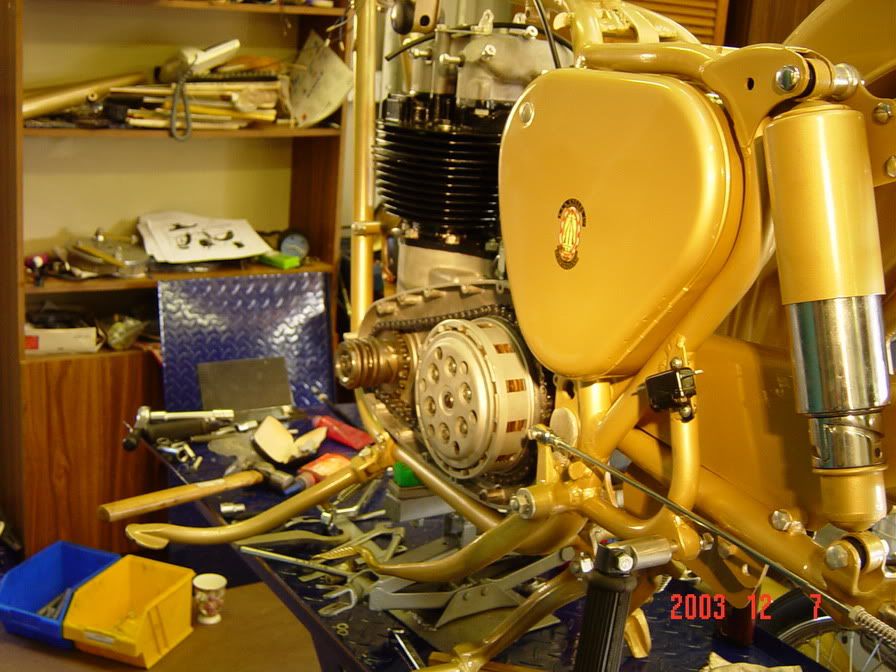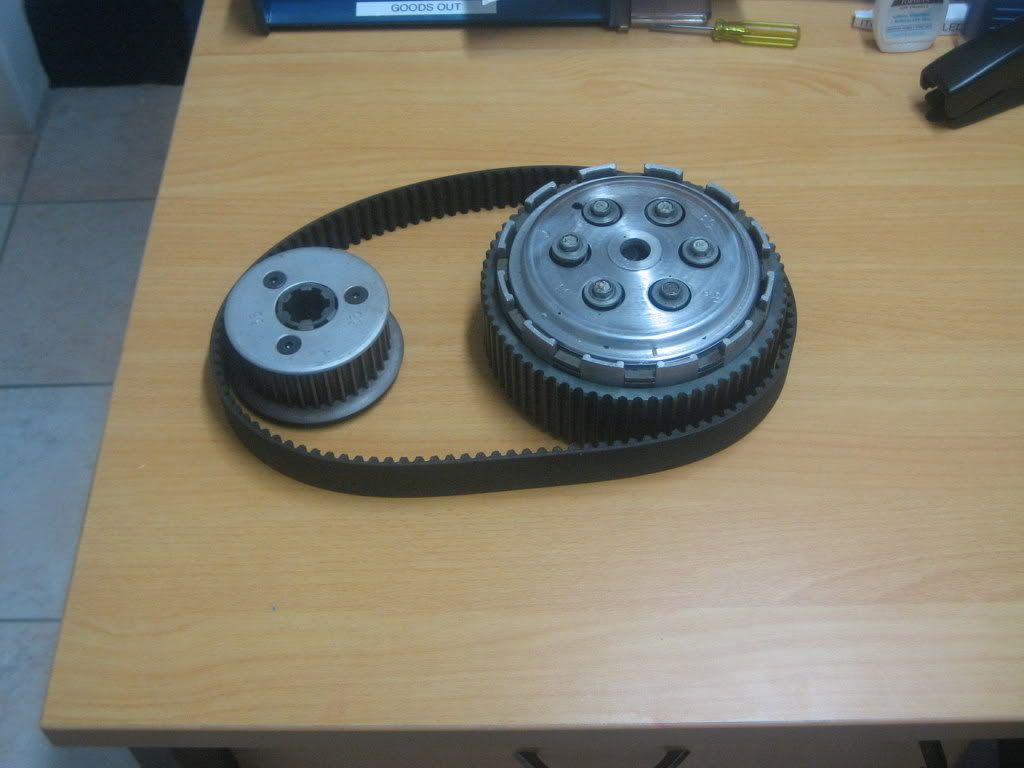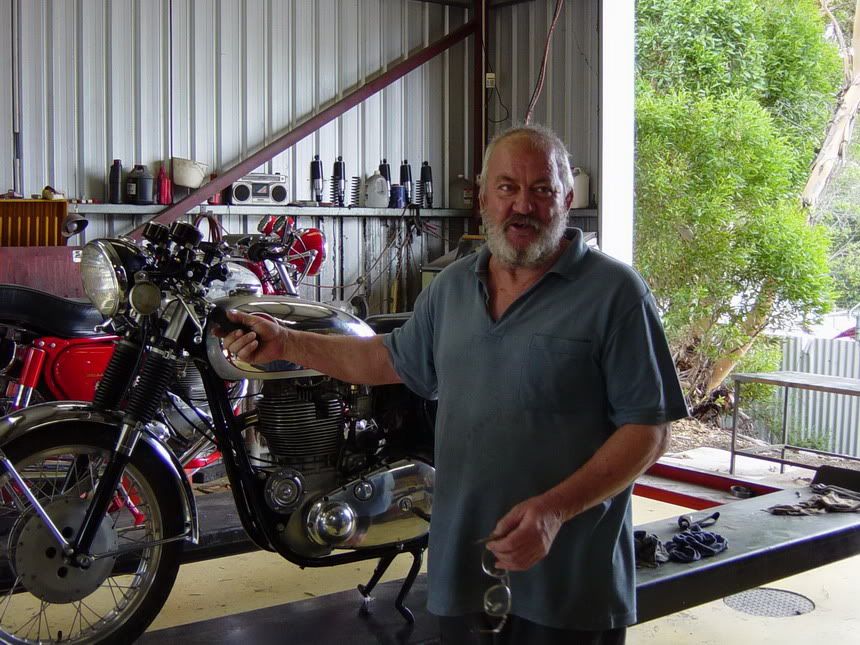John,
This is a Suzuki GS550 clutch, which a mate of mine in Perth knocks up.



I have them in all of my swing arm bikes.
The rigid and plunger A10 have the standard 6 spring clutch (with the dome cover). Apart from fitting an alloy pressure plate, and setting them up with a dial indicator, they are standard (and really nice clutches).
Here is the standard clutch on my plunger bike:

Now, I am building a Super Rocket special (BTH maggie, TLS brake, roller bearing timing side bearing, etc...) and have had my mate do a belt drive. I love japanese 2 stroke dirt bikes, and had a spare clutch from a PE400 Suzuki which I am restoring, and this has been converted to belt drive for the Super Rocket.

This is Colin Tie, who prepares the clutches, and one of his many Gokld Stars.
Richard
